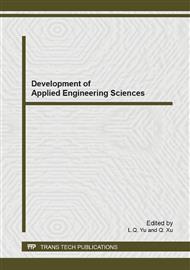p.532
p.536
p.540
p.544
p.548
p.553
p.557
p.561
p.565
Application of RFID in a Flexible Assembly Production Line Based on Tracking Algorithm
Abstract:
Radio frequency identification (RFID) technology provides a wireless way to detect and recognize objects. By using the RFID reader as a sensor, development of RFID helper object tracking system to track the production situation of a flexible assembly line make tracking application. At the same time, based on the range and without scope of cooperation tracking algorithm, we analysis the system. And in order to achieve the balance of density and cost among the read write device, this paper considers only simple reader and omnidirectional scattering antenna. In order to further improve the production efficiency, we use a particle filter model, in order to further processing tracking result of object, improve tracking precision. We suggest that the tracking system can also predict the operation state of product in assembly production line.
Info:
Periodical:
Pages:
557-560
Citation:
Online since:
October 2014
Authors:
Price:
Сopyright:
© 2014 Trans Tech Publications Ltd. All Rights Reserved
Share:
Citation:


